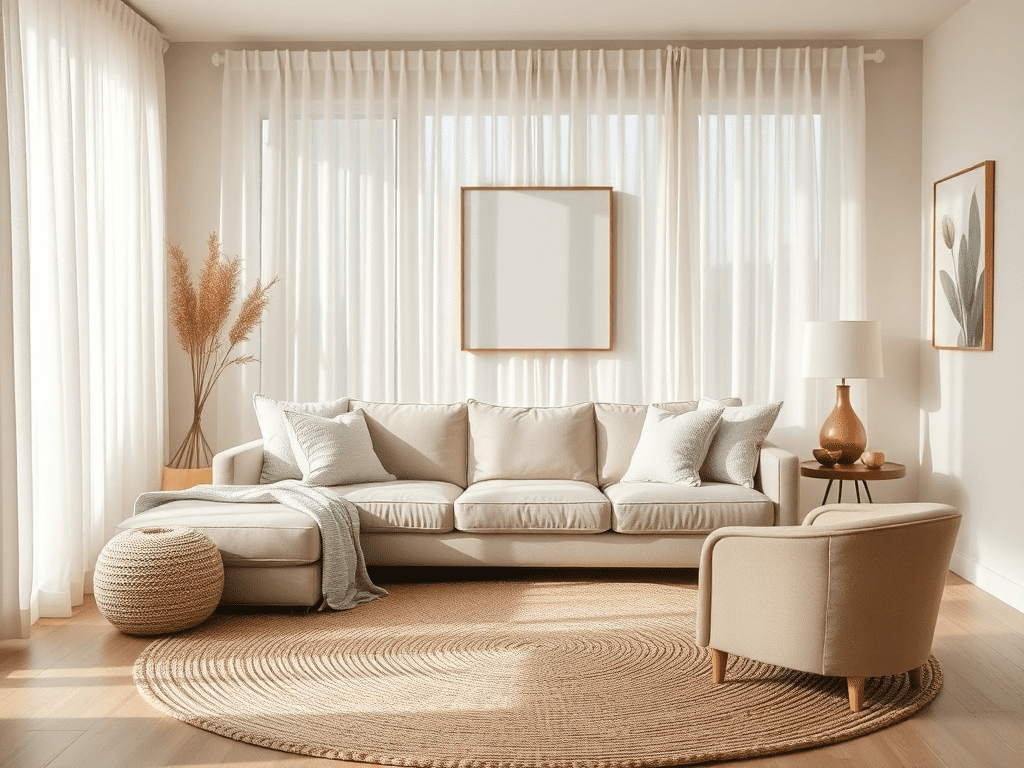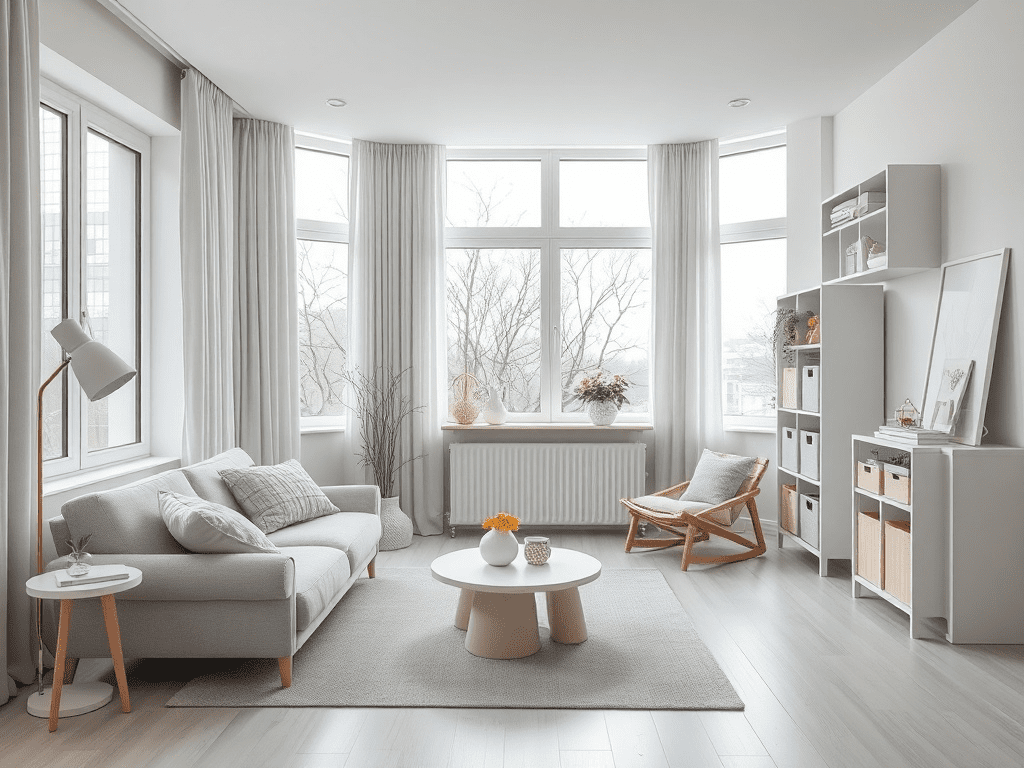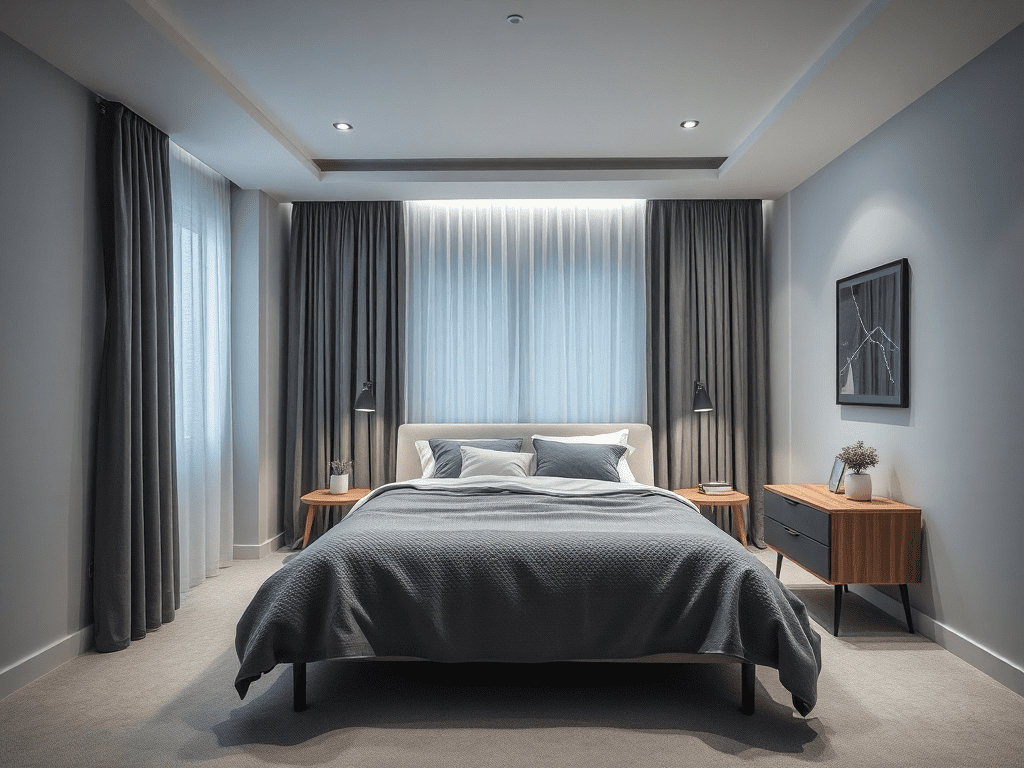Creating a home that supports the well-being of autistic adults involves understanding their unique sensory needs and preferences. Interior design for autistic adults goes beyond aesthetics; it’s about crafting a safe, comfortable, and functional environment that reduces sensory overload and promotes relaxation [i]. This approach focuses on elements like color, lighting, texture, and spatial organization to create a harmonious living space tailored to individual needs.
What is the Best Interior Design for Autistic Adults?
The ‘best’ interior design is subjective and depends on the individual’s specific sensitivities and preferences. However, some universal principles can guide the design process. Prioritizing simplicity, predictability, and minimizing sensory distractions are key [i]. A well-designed space should promote calmness and reduce anxiety, allowing autistic adults to thrive in their home environment.

How Can Sensory Overload Be Minimized in Interior Design for Autistic Adults?
Sensory overload can be a significant challenge. Here’s how sensory design principles can help:
- Color Palette: Opt for calming and neutral colors like blues, greens, grays, and creams. Avoid bright, intense colors that can be overwhelming [i].
- Lighting: Use adjustable lighting to control brightness and reduce glare. Natural light is ideal, but supplement with soft, diffused artificial light. Avoid fluorescent lighting, which can flicker and cause discomfort. What type of lighting is best for autistic adults in home design? Consider layering lighting with dimmable options.
- Sound Dampening: Incorporate sound-absorbing materials like thick curtains, rugs, and acoustic panels to minimize noise.
- Texture: Choose soft, natural textures like cotton, wool, and wood. Avoid harsh or scratchy materials.
- Minimize Clutter: A minimalist approach reduces visual distractions and promotes a sense of calm.
What Furniture is Best for Interior Design for Autistic Adults?
When selecting furniture, prioritize comfort, functionality, and durability. Rounded edges can prevent injuries. Choose sturdy pieces that won’t easily tip over. Consider weighted blankets or furniture for added security. Here’s a comparison table:
| Furniture Type | Recommended Features | Things to Avoid |
|---|---|---|
| Seating | Deep, comfortable cushions; supportive back; rounded edges | Wobbly frames; sharp corners; scratchy fabrics |
| Tables | Solid wood or metal base; smooth surface; rounded corners | Glass tops; flimsy construction; sharp edges |
| Storage | Closed cabinets; clear labeling; easy-to-access shelves | Open shelving (can create visual clutter); complicated mechanisms |

How Can I Design a Sensory-Friendly Home for Autistic Adults?
Designing a sensory-friendly home involves careful planning and attention to detail. Here are some good interior design tips for autistic adults:
- Create Zones: Designate specific areas for different activities, such as a quiet room for relaxation and a more stimulating area for work or hobbies.
- Use Visual Cues: Clear labeling and visual schedules can help with orientation and predictability.
- Provide Safe Spaces: Create a designated safe space where the individual can retreat when feeling overwhelmed.
- Incorporate Biophilic Design: Bring elements of nature indoors, such as plants and natural light, to promote calmness and well-being. As stated by the National Autistic Society, incorporating natural elements can reduce stress [National Autistic Society].
FAQs About Interior Design for Autistic Adults
What is interior design for autistic adults?
Interior design for autistic adults focuses on creating living spaces that are tailored to meet the specific sensory, cognitive, and emotional needs of autistic individuals. It prioritizes creating environments that minimize sensory overload and promote comfort, safety, and independence.
Why is interior design important for autistic adults?
Thoughtful autism-friendly design can significantly improve the quality of life for autistic adults. By creating a supportive and comfortable home environment, interior design can reduce anxiety, improve sleep, and promote overall well-being [ii].

What are the key elements of interior design for autistic adults?
Key elements include careful selection of colors, lighting, textures, and furniture, as well as minimizing clutter and creating predictable layouts. Sound dampening and the creation of safe spaces are also crucial considerations.
How can I minimize noise and distractions in a home for an autistic adult?
Use sound-absorbing materials such as thick curtains, rugs, and acoustic panels. Consider noise-canceling headphones or earmuffs for times when noise levels are unavoidable. Minimize visual clutter and create organized storage solutions. As seen in a study by NCBI, sound dampening can reduce anxiety in autistic adults [NCBI].
How Much Does Interior Design for Autistic Adults Typically Cost?
The cost of interior design for autistic adults varies widely depending on the scope of the project, the designer’s fees, and the materials used. A simple redesign of a single room might cost a few hundred dollars, while a full home renovation could cost tens of thousands. How much does interior design for autistic adults usually cost? It’s important to get quotes from several designers and to have a clear budget in mind.
How Can I Find an Interior Designer Experienced with Autistic Adults?
Finding an interior designer experienced with autistic adults is crucial. Look for designers who specialize in sensory design or neurodiversity-affirming design. Ask for references and review their portfolio to see if their style aligns with your needs and preferences. You can find interior designers specializing in autism on professional websites [ASID].
Interior design for autistic adults is an investment in well-being. By creating a home that supports their unique needs, you can help autistic adults thrive and live fulfilling lives.


